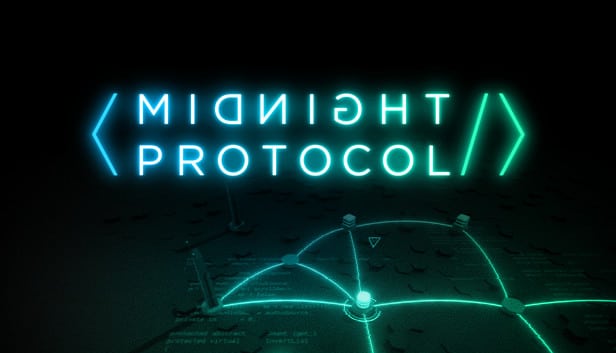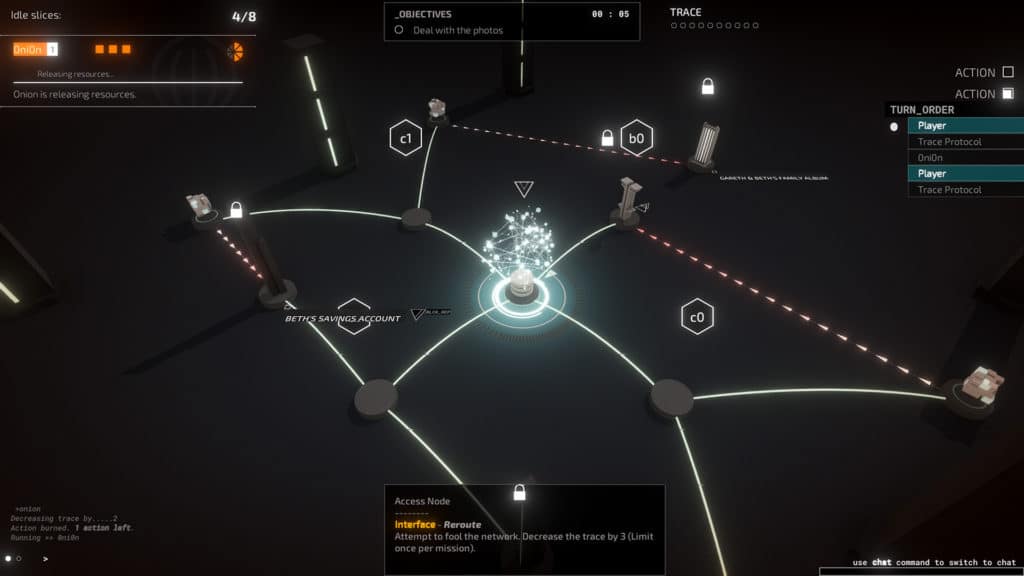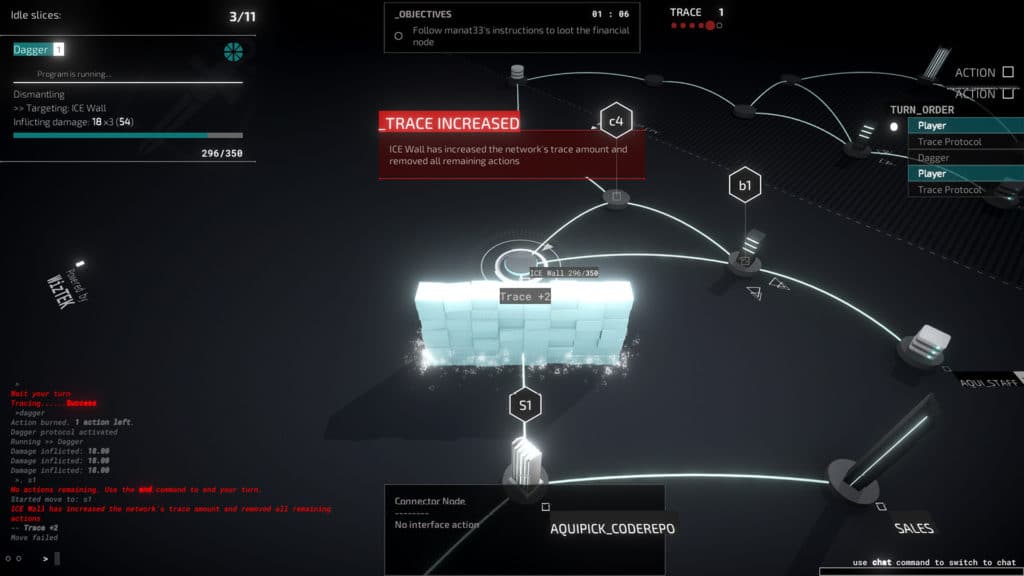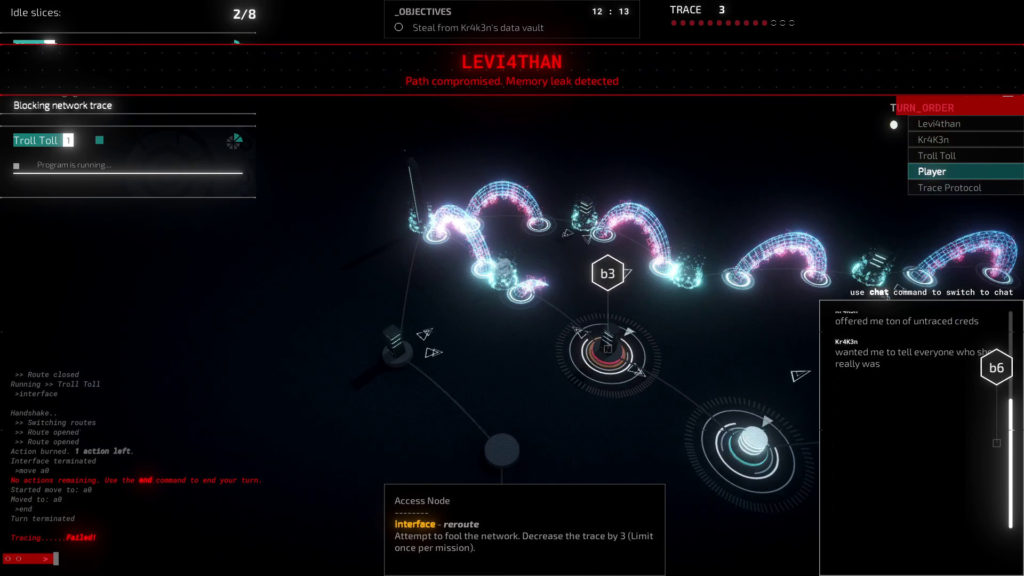We got our hands on Midnight Protocol, a narrative RPG with some interesting mechanics to say the least. The game is being developed by a Belgian Studio called LuGus Studios and I truly believe they’ve got something special on their hands. Let’s talk!
Midnight protocol puts the player into the mind of “Data”, a professional hacktivist who experiences his own digital weapons against him. Data has experienced a cyber-attack that revealed his true identity on the world wide web. You can imagine that this security breach is a big one. Long story short, Data will soon be the target of some horrifying cyberattacks that will be produced by a darker part of the government. At this moment, Data is in a dangerous position and he wants to know who doxxed him and with what purpose. He takes matters into his own hands and goes on a digital adventure to figure out the culprit. Our protagonist “Data” hacks into servers, breaches security systems, and discovers encrypted files that might hold the answers to this mysterious attack.
“You truly take on the role of a hacker that only needs his brain and fingertips at his keyboard.”
Midnight Protocol is definitely something different and even though, I was a bit skeptical, in the beginning, I can now tell that LuGus Studios have a diamond in their pocket. The way the developers are handling their game is absolutely bold and experimental but it brings some innovative gameplay elements to the table. The game is a narrative RPG with tactical elements that can only be played by the input of your keyboard. There’s no running around with joysticks or firing weapons with your shoulder buttons… You truly take on the role of a hacker that only needs his brain and fingertips at his keyboard.
Midnight Protocol is different and something that we haven’t seen before. As you take on the role of our hacktivist Data, you’ll learn commands that’ll help you hack different systems: data centers, bank accounts, firewalls, … The way you play the game is always about being dropped into a digital environment and hacking your way to the date you need by entering the right type of command that’ll do the right action when you need it. Just take in mind that the game tries to put you under pressure by implementing a turn-based system. You’ll only have a specific amount of turns before the digital police catch you and re-trace your footsteps to the footsteps of your door. In this digital environment, you’ll have different objectives to complete. It’s up to you to make the right choice when it comes to the use of your hacker vocabulary. You’ll also be using a deck of hacker skills, so it’s also important to equip the right type of deck for the right type of job! You’ll learn new tricks on the way and the black market is also there to supply if needed.
“In other words, the game is there to help you in your time of need.”
The game can be played in different “missions”. You’ll receive a mission along the narrative part of the game and you’ll see the objectives that need to be completed. You’ll also get a glimpse of what the next digital environment will include. By knowing this, you can already figure out what kind of hacker vocabulary will do its part during this mission. The way the hackers’ vocabulary is being introduced, has a smooth way of introducing itself. Each mission, in the beginning, builds up towards the total of the needed game’s vocabulary. Each mission allows you to try the things you’ve just learned and add a new hacker command to your vocabulary. I thought this would be a little too much vocabulary to play the game decent enough but the developers implemented a help-command that allows you to look up the hackers’ vocabulary you’ve already learned. In other words, the game is there to help you in your time of need.
The game does take some time to get used to but in the end, I truly felt like a hacker. Using technical terms to achieve my goal without ever really knowing what the technical term actually presents. The game does the tutorial perfectly and thoroughly. There was no sense of “feeling lost” during the tutorial and that’s a plus in my book. Like I said before, there’s even a help command that’ll give you an overview of the technical terms you’ve already read.
“I felt so immersed I got sucked into the game easily.”
How the game presents its story is fairly simple and genius at the same time. You’ll stare at the e-mail box of Data and you’ll receive different e-mails containing different missions. The story and the answers you give (as Data) are already written so you just have to click on the tab and watch the story unfold. However, you can also toggle your keyboard randomly and the in-game text will also appear. This was so simple and yet, I felt so immersed I got sucked into the game easily.
Technical speaking, I truly like the esthetics of the game. It’s based on a simple context but it truly suits the game perfectly. The grey and white tints in combination with that little bit of static. Most people may find it too simple-looking but in a way, the game doesn’t need that much to truly shine its potential. It also runs fluently and I didn’t find any hiccups during my playthrough. It’s the gameplay and the narrative way of things that make this game enjoyable.
Conclusion:
I can only say… hats off to the developers. Thank you for being creative and experimental! You are the developers we miss in this bland gaming world. From what I’ve played and seen, I believe this game will be welcomed by a lot of players who are searching for something new and distinct. Midnight Protocol is an original indie game that shows a lot of potential. It’s a game that needs a bit of concentration to get into but that moment when the narrative part combines with the gameplay elements, you will be hooked. I am curious about how this game will evolve in the near future but I can already say, I’m a big fan!
Tested on PC






